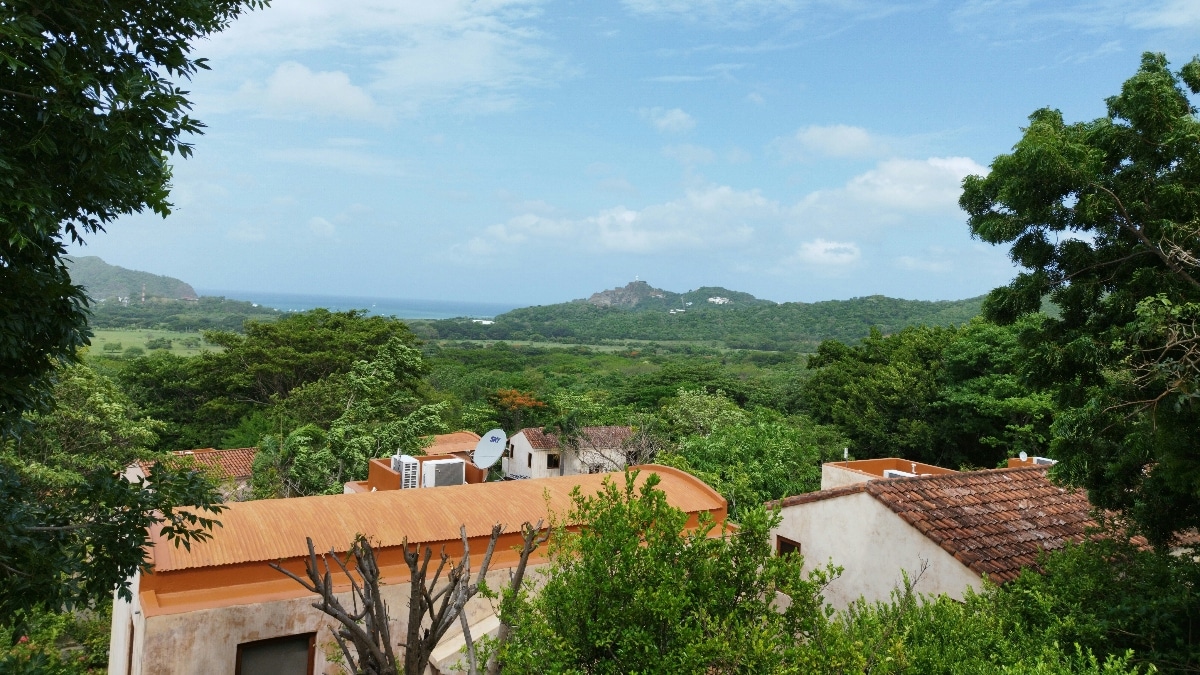Nature in Costa Rica isn’t all cuddly sloths, playful monkeys, and hummingbirds. You’ll have to deal with some more unwelcome house guests, too, even in the urban setting of Escazú. Here’s an expat’s account of dealing with creepy crawlies in Costa Rica. This article contains links to Amazon, from which, as an Amazon Associate, this website will earn a small commission if you make any purchases. Visit our Affiliate Disclosure Page for more info.
Before we moved to Costa Rica, I read the book The Green Season by Robert Isenberg. The chapter on bugs crawling out of the woodwork was frightening, and I thanked our lucky stars that our rental home in Escazú wouldn’t be as close to nature as Isenberg’s! Little did I know that the urban jungle of Escazú—a town just outside the capital city of San José—does not care about the size or location of your house, or whether it’s modern or rustic. When the seasons change, the bugs will need a home!
Issues with Ants…
First, in December, we developed an ant problem. And not those cute little black ants that march around the kitchen, either. No, these were the big, red bullet ants that made an audible crunch when stepped on. We looked for their source everywhere, crawling around with flashlights and checking the grout and door frames with no luck.
It was my sister, visiting from New York and also afraid of bugs, who put two and two together. The ants were falling out of the light fixtures from the ceiling onto the floor. In horror, I relayed this story to other moms who nodded without surprise. They assured me the ants would be gone in two or three days—back to their burrows until the seasons changed again. In the meantime, get used to it and sweep them out.
Next, BIG Spiders…
Then came the tarantulas. Our house was nice and tidy until the end of January when a palm-sized tarantula arrived at our front door. My husband grabbed a golf club and debated for about thirty minutes on how to remove our guest from the front steps. He gave up and vanished to EPA in search of tarantula repellent.
Armed with my rain boots, a broom, and a dustpan, I slid the spider onto the dustpan and deposited it in the garden. It seemed so tranquillo and lifted one leg as if to thank me with a silent ‘pura vida’ for the ride back to the grass. My husband returned, horrified I’d moved it without a full hazmat suit!
Then Snakes…
Less than two weeks later, I would come to wish for that hazmat suit. We found a coral snake on the driveway, venomous, yes, but small. I ran back inside for my infamous rain boots and a shovel. I have two kids and two dogs, and this guest didn’t seem ideal.
Our landlord arrived minutes after I called him, begging me not to harm the snake. He said the coral snake is a national treasure, and its mouth was so small it would not bite me or the kids—the dogs were another story, though.
While talking to him, we lost the snake in some leaves and rocks. His parting advice was not to kill these creatures we keep finding at our house but to accept them and maybe start a blog about them. Panicked, I called my husband and let him know there was a poisonous snake in the driveway. His advice: “Don’t stand in the driveway!” (He is ever so helpful)
Our pest control service also stopped by to spray the perimeter of the house with an anti-snake spray of garlic and essential oils. Snakes also dislike the smell of dogs—thank goodness—and we haven’t seen another one since.
Speaking of pest control services, if you need frequent attention, creating a comprehensive pest control contract template can be invaluable. This provides clear guidelines on service frequency, scope of work, and renewal terms—much needed when attempting to keep those creepy crawlies at bay.
That said, the other day I returned home to find a piece of discarded snake skin in the yard. The day after, our dog had tracked a snake and cornered it in the backyard. Our gardener bribed the dog away with a cookie, not so he could capture the snake, but so he could let it go. He explained it was a good snake that would eat all the bad things in the yard. I started asking what type of bad things but stopped. Better not to know.
Scorpions…
While the snakes may have gone, we haven’t been as lucky with scorpions. JR from Bug Busters uses a green and pet-safe spray that only harms bugs. For about two or three days after he comes, our house fills up with dead or dying bugs that have crawled out of whatever they have made their homes in. Walls, closets, ceilings—you name it.
Beetles, spiders, dragonflies are the norm, but our best find happened right before Easter when my mom was visiting from Atlanta. A mama scorpion that had given birth to hundreds of babies, which she was carrying on her back, wandered over to the couch and collapsed. She was dead, but the babies were fine.
I ran for my trusty broom and dustpan but was unsure what to do with my catch. You can’t throw scorpions in the trash, you can’t put them back in the grass, but you can put them in a jar with a lid! For days after, we’d find four or five dead baby scorpions in the same spot.
Beetlemania
We have all kinds of beetles. The giant brown ones that live in trees, the green metallic ones that shimmer in the rain, and the rainy season light brown ones that fly into windows and walls. We found a beautiful palm-sized tree beetle that had succumbed to the elements, and my Spanish teacher asked if she could take it home—she was so enthralled.
There is a beetle type for everyone in Costa Rica. We bought an electric bug zapper the first year we lived here. It zapped so many bugs it started smoking one night. We would change the bug filter daily and realized we would never win, so we got rid of it. These critters become part of your life, and you can recognize the time of the year based on the bugs.
Flying ants? It must be May. Giant spiders stringing yellow webs on every outside area—getting ready for Halloween in Costa Rica. A locust or grasshopper (or whatever) the size of a small cat on the outside light—must be the dry season.
You learn which critters you do not want in your house (bye-bye scorpions and tarantulas) and which can stay (hello mosquito eaters and geckos).
Gaining Acceptance
Over half of Costa Rica is rainforest, and it makes sense your home might have local guests from time to time. Good quality bug spray and a few deep breaths will help.
This past week, an iPhone-sized moth hit my daughter in the head while she brushed her teeth, and my son found a scorpion in the shower. My dogs cornered a firefly into the curtains, and a spider bit my arm while I slept, one of those that spread toxin through its urine when it pees on the bite mark. You know, just an everyday life event.
Don’t ask me how, but one time we even found a river crab in our driveway. Anyway, we use it as a science class and look at them under the microscope and research them in my son’s Bugopedia book, which we now take everywhere with us. After all, you never know what nature in Costa Rica is going to creep up on you.




